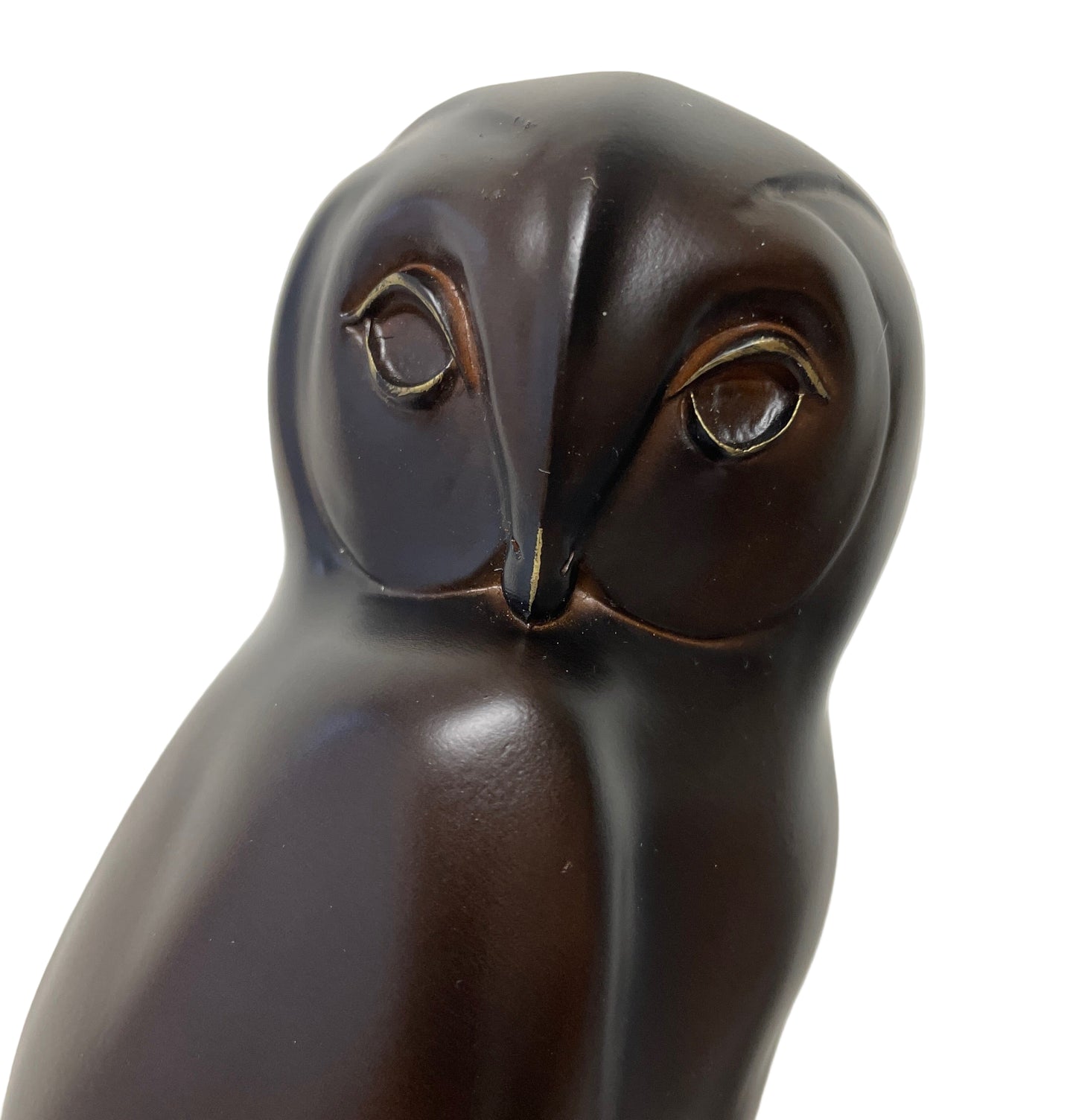Parastone
Francois Pompon Owl Statue Replica Bronze Finish Resin, Birds Nature Animals
Francois Pompon Owl Statue Replica Bronze Finish Resin, Birds Nature Animals
SKU:POM13
In stock
Couldn't load pickup availability
Item Specifics
Item Specifics
- Dimensions (in): 9 1/2 in. x 4 1/4 in. x 3 1/2 in.
- Weight: 4.6 lb
- Material: Bonded Bronze
- Item type: statue
- UPC or EAN: 8717202553945
Owl Bird Statue Replica by renowned French sculptor Francois Pompon. The owl, with its head turned in alert observation, embodies Pompon’s signature minimalist style — smooth, rounded forms that capture the essence of the animal with remarkable grace. This refined simplicity became a defining hallmark of early 20th-century modern sculpture.
Crafted from high-quality resin with hand-painted matte and glossy finishes, this collectible figurine from the Parastone Mouseion 3D Museum Collection beautifully recreates Pompon’s vision of nature distilled into pure form.
-
Inspired by Francois Pompon: Faithful reproduction of Pompon’s iconic modernist owl sculpture.
-
Elegant Minimalist Design: Captures the essence of the owl with smooth, rounded forms and timeless simplicity.
-
Museum-Quality Replica: Part of the Parastone Mouseion 3D Collection of collectible fine art sculptures.
-
Premium Materials: Made from durable resin with hand-painted matte and glossy finish for artistic depth.
-
Educational Inserts Included: Comes with a full-color card showing the original artwork and a description of the artist.
Large: 9 1/2 in H x 4 1/4 in W x 3 1/2 in L, PN POM13, 4.6 lbs.
Share










